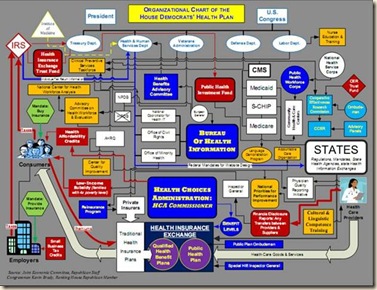I was just responding to a thread between several of my former classmates from GWU Med School. After composing it and reading it I realized my thoughts probably reflect those of you who read my blog.
Dear Gary,
I thank you for your letter to Al. Your continued leadership is a blessing. Jim Rowsey On Aug 8, 2009, at 7:52 AM, Gary Levin wrote:
> Dear Al,
>
> Sorry my response was so abbreviated. I was thinking a great deal
> about what you said about opposition vs. leadership.
>
> As you and I know this is a very complex "industry'. Each segment
> responds to market pressures in it's own way.
>
> I agree that physicians must be leaders, as we have always attempted
> to do so as patient advocates...
>
> Frankly my feeling (and many others) is that our advocacy for patients
> and our desire to 'comply' and not rock the boat has led many segments
> to take advantage and use their own advantages to obtain what they
> desired.
>
> Now we are being asked to agree with an overall sweeping change to
> further accommodate and endorse what we already know does not work.
> Some of these changes started as far back as 1971 when the HMO act
> began a series of events that had many unintended consequences such as
> the failures of many practices, unethical marketing practices, the
> construction of many evanescent organizations which controlled
> physician referrals, closed out markets to new entrants (ie, new
> physicians). And some of these have led to the shortage of primary
> care physicians.
>
> Our present system gives more credentialing clout to insurance
> companies than state medical boards, The only group of people that
> have consistently been asked to do more for less while our overhead
> has soared is physicians and hospitals. It is close to a miracle we
> have survived. Many of us went bankrupt in the late 1980s here in
> California. Medicaid is an unfunded mandate, and actually Medicare is
> as well.
>
> The devil is in the details. I doubt if any legislator is capable of
> analyzing the impact of this gargantuan bill. Our leadership should
> consist of careful advice in regard to the known impact and the
> unintended consequences of each portion of this 'global HR 3200.
>
> I am not opposed to change, however slick slogans and the 'crisis
> mentality'
> of our present administration is disingenuous. Doctors have been
> talking crisis for the past 20 or more years.
>
> Change can be made. The first is that the insurance industry must
> stop cherry picking and have a level playing risk pool. Health
> insurance should not be an employer responsibility. That is obvious
> by the many who lose their coverage for no good reason other than they
> lost their job and COBRA rates are punitive. If someone in their mid
> 40-50s becomes ill and loses their coverage, it is neigh well
> impossible for them to regain coverage due to exclusions wavers and
> predatory premiums. These changes are do- able.
>
> Reimbursing primary care doctors equitably would swell the ranks of
> primary care. Even though I have been an ophthalmologist the majority
> of my career, I miss many aspects of general medicine. Primary care
> physician spend a lot of time triaging to specialists. They are not
> reimbursed for this cognitive skill.
>
> I know that most physicians have tried to be calm, reasonable, and
> also have compromised a great deal (under the economic threat of
> worse)....
>
> Perhaps the younger physicians will not know better.
>
> Americans will lose their freedoms if medicine goes the way Obama
> wants it to. We are a deeply divided nation. I don't think we need to
> look at other countries for a 'better solution'...we have it in our
> power to develop a beter system right here, and now.
>
> The argument that if we don't do it now, it will not be done, and our
> economy, the country and the world will go away. Balderdash!!! The
> taxpayers were forced to bail out the financial world, why should they
> be asked to continue throwing money down the toilet. (there is no end
> to medical expenses, Who wants to let their parents, brothers, etc
> die?
> Especially if mandated by a huge unfeeling government or insurance
> entity.
>
> For many years children, brothers and sisters made those decisions
> based upon their family's needs and desires.
>
> We now have to get authorizations, certifications, approvals to have a
> bowel movement. How much money does all of that cost? A doctor can no
> longer express his anger or discontent at the hospital without being
> sent to 'anger management' I doubt if there is a group of
> professionals who have been taught more about imperturbability and
> equanimitiy than physicians.
A word from Senator Coburn D Oklahoma, physician.
>
>
My next post will contain Part II>
> It's great that our class is still so active in these matters.
>
> My best to you , old friend...I hope your health maintains..
>
> Gary Levin
>








